
301 Anthes Avenue
Langley United Methodist Church
1909: Church built
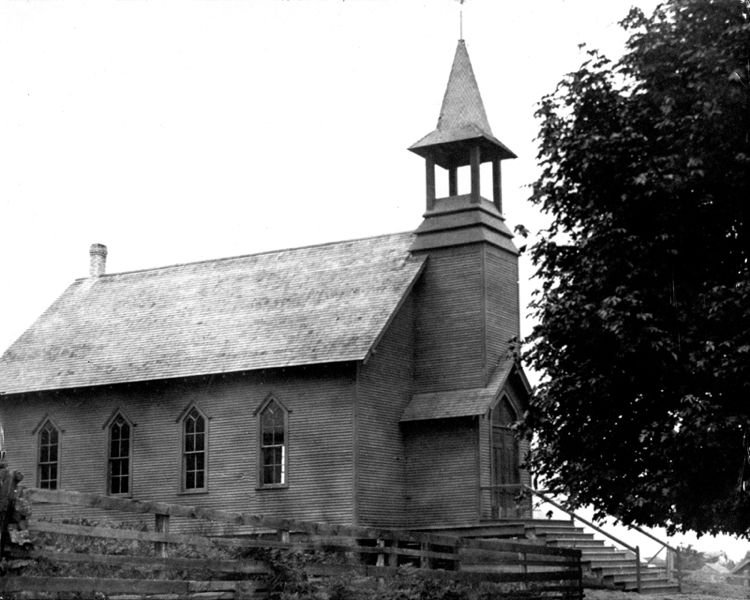
1909. Methodist Church (Courtesy Mary Vergin).
The original Methodist Church building was the second church in Langley. The church began on August 11, 1901 when fourteen people who had been meeting at the "Friends" Community Church on First Street in Langley petitioned the Methodist Conference in Olympia to become a Methodist Church. They formed a class with E.D. Spooner as leader. W.F. Dailey was appointed pastor in 1902, and G.W. Stroops in 1903, but after 1904 there was no pastor for nearly five years. Both Methodists and Friends had struggling Sunday Schools in the early days.
In April, 1909, Andrew Jackson McNemee ("Brother Mack"), an itinerant Methodist preacher, was sent to Langley to provide him a "lighter job," as he had suffered a nervous breakdown. Based on a letter written by Brother Mack, although ill, he located a desirable church site the first day after his arrival. The first Sunday he took offerings for lamps for the new church, second Sunday for hymnals. On the third, he announced he was ready for donation of lots. Two lots on Anthes Avenue were donated for the church, but Brother Mack wanted to locate the church at the corner of Third Street and Anthes Avenue. He sold one of the donated lots and "after considerable negotiation," bought the lot at the corner of Third Street and Anthes Avenue from the blacksmith, Anton Anderson.
Construction began two months after his arrival in Langley. Prolific builder and future Langley mayor, Albert Melsen, was the construction foreman. Six months after construction began, a church building costing $1,800 was complete, and the new church was dedicated September 13, 1909. It was claimed to be "the only church building this side of Coupeville." A one-room parsonage was built on the lot immediately south of the church a year later.
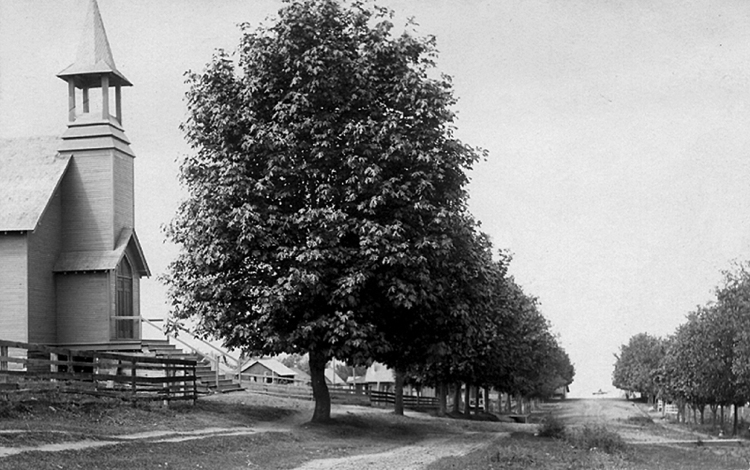
1909. Looking north along Anthes Avenue(Courtesy South Whidbey Historical Society).
Entrance was through the bell tower. The outhouse was located just outside the back door of the church near where the alley is. The sanctuary had a wood stove, and there were hooks around the wall to hang coats and a variety of chairs. Fourteen pews were later installed with materials supplied by the Woman's Society of Christian Service.
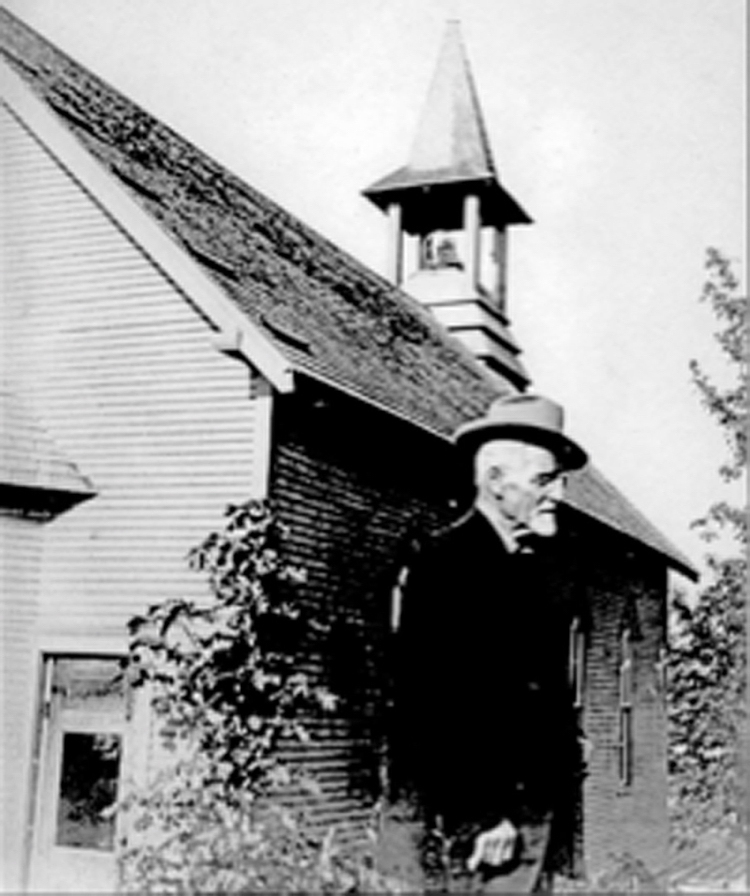
Circa 1916. Rev. McNemee Standing at the S.W. corner of the church (Courtesy Mary Vergin).
Two years after the dedication, a 400 pound bell was bought by popular subscription for $40. Albert Melsen and Martin Mortenson put it in place with a block and tackle.
The Langley church was the sixth and last church built by "Brother Mack." He left town for a time, but returned to Langley in 1916 for one more year before retiring. He died in Langley in 1936 and is buried in the Langley Woodmen Cemetery.
In 1938, the area below the church was excavated to form a basement. The kitchen in a small room under the bell tower had a wood cook stove. Roderick McLeod helped dig the basement and carted the dirt to fill in the road to Bayview in the "swampy" area by the creek. A spring under the church had to be rerouted.
In April 1953, the name of the Church was officially changed to Langley Community Methodist Church. In 1968, The United Brethren Church and the Methodist Church joined to become the United Methodist Church.
1958: Addition added on south side
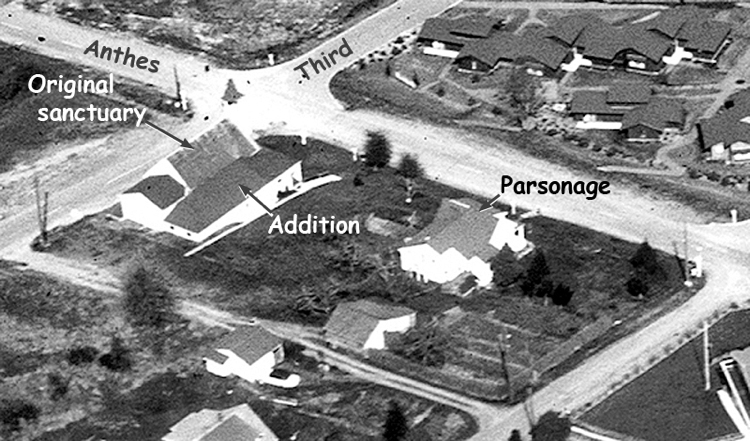
1971. Aerial view of Methodist Church, addition and Parsonage (Courtesy Ben Breedlove).
In 1958, an addition was added to the south side of the original sanctuary. The bell tower enclosed, and a glass-block cross was installed. The entrance to the church was moved to the "up-hill" side, and the original long flight of steps from Anthes Avenue was replaced by two shorter ones joined by a sloping walk to make entry easier.
1987: Congregation moves into its new Fellowship Hall.
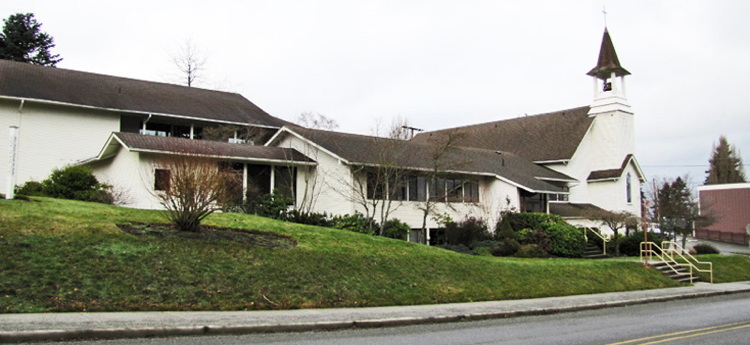
2013. Langley United Methodist Church viewed from Anthes Avenue (Courtesy Robert Waterman).
A second addition with space for a library, office and pastor's study was added in the late 1970's, and a larger addition which included a kitchen, four bathrooms, the Fireside Room and five new classrooms replaced the Parsonage in 1987.
In 1989, The South Whidbey Youth Center was organized and began using the basement for an after school youth center known as the HUB.